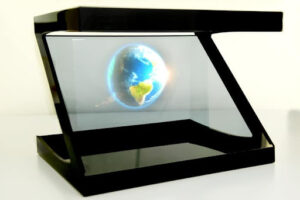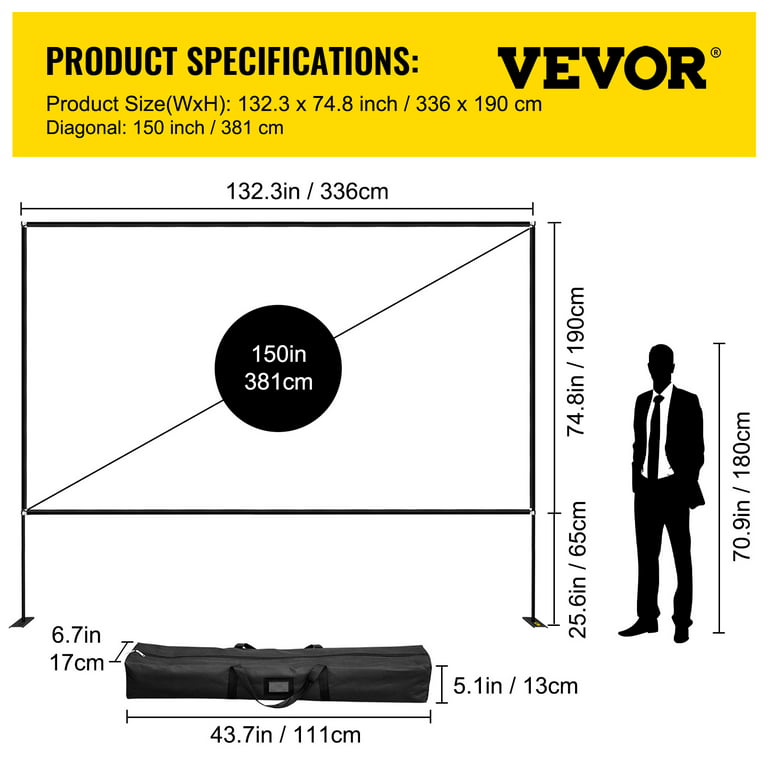Hologram Projectors Explained: The Technology, Mechanics, Applications And Future
Introduction
Holography, once merely a figment of our imagination in sci-fi movies, has now become a reality - thanks to the advent of hologram projectors. This article aims to demystify the powerful technology behind hologram projectors, delve into the mechanics that make these devices work, and explore their various applications. We will also venture into what the future might hold for this awe-inspiring technology. So, whether you're a tech-enthusiast, someone interested in studying about fascinating gadgets, or a professional considering implementing holographic technology, this piece will have something valuable for you.
What is a Hologram Projector?
A Hologram Projector - this might sound like something straight out of a sci-fi movie, but the technology is real, and it's gradually becoming a part of our world. Here's a brief overview of what a hologram projector is:
- An Innovative Device: A hologram projector is a cutting-edge device that goes beyond the boundaries of conventional projectors. Instead of simply projecting 2D visuals onto a flat surface, it brings images to life by creating a three-dimensional projection that seems to hover in the air.
- The Power of Algorithms and Light Technologies: At its core, a hologram projector uses complex algorithms and state-of-the-art light technologies to convert digital images into an immersive 3D display. This process results in a powerful visual experience that creates the illusion of a live, floating 3D object.
- Immersive Visual Experience: The main attraction of a hologram projector is its ability to captivate. The resulting 3D display is not just a static image – it is interactive, giving the viewer a sense of depth and space that is typically only experienced in reality.
In short, a hologram projector technology might seem like a magic trick, but it is a combination of advanced computing and optics that create this wonder of modern technology.
How Does a Hologram Projector Work?
The smooth operation of a hologram projector depends on a complex process that involves manipulating light particles to create a realistic representation of a 3D object. Let's break down this impressive process step-by-step:
1. 3D Modelling: The journey of creating a holographic image starts with a three-dimensional model designed in a specialized computer program.
2. Conversion to 2D Cross-Section Images: This 3D model is then converted into a series of cross-sectional images, taking a multidimensional image and rendering it into manageable 2D sections.
3. Projection onto Special Film: These flat, two-dimensional images are then projected onto a unique film. This film is not your standard movie screen, rather it manipulates light and its wavelength to initiate the creation of a holographic image.

4. Dispersion of Lasers: In the next phase, the projector's lasers come into play, scattering light in specific patterns that cause the hologram to appear as though it's suspended in thin air.
5. Creation of a 3D Display: The interaction of the beams of light creates a convincing optical illusion of a three-dimensional object. Additionally, the image changes as per the viewer's perspective, further adding to the illusion's realism.
Thus, from an intricate process that involves lasers, specialized films and complex algorithms, a captivating and almost tangible 3D hologram is born. It's a fascinating fusion of science, art and technology that has the potential to change how we interact with digital media.
What are the Key Components of a Hologram Projector?
The magical performance of a hologram projector ties back to its integral constituents working in harmony. Here's an overview of the primary components:
1. High-definition projector: The heart of the system, the HD projector is the facet that creates those initial 2D images. The better the projector's resolution, the more detailed and intricate the hologram it will produce.
2. Lasers/LED light sources: Holograms come to life thanks to this light source. Generating the fundamental light necessary for creating the hologram, these sources can vary from more simple LED lights to more complex lasers depending on the design of the device.
3. Condenser lens: The role of the condenser lens is vital. It directs and concentrates the light particles and ensures the hologram maintains the necessary integrity to project the 3D image effectively.
4. Holographic film: Without the holographic film, the 2D image, and subsequently the 3D hologram, could not form. The film is specifically crafted to manipulate light and its wavelength, fundamentally facilitating the transformation of a basic 2D image into an awe-inspiring 3D creation.
5. Electrical equipment: This controls the operation of the overall system. This equipment synchronizes the actions of the different factors involved in creating the hologram, from the capturing of the initial image to the projection of the final hologram.
Understanding these key components offers valuable insight into how the hologram projector seamlessly manifests visually stunning 3D content.
Where are Hologram Projectors Utilized?
The versatility of hologram projectors has opened up its applications in an impressive range of sectors. The industries incorporating this high-tech solution into their operations for added advantages are diverse, ranging from entertainment to education. Let's delve into some significant applications of hologram projectors in more detail:
- Entertainment Industry: Hologram projectors have innovatively redefined the entertainment landscape, with their most iconic implementation being in the music sphere. Concert organizers creatively employ this technology to resurrect legendary musicians for mind-blowing performances or to facilitate live concerts from artists present in different geographic locations.
- Retail Sector: The retail industry also capitalizes on this cutting-edge technology. Instead of traditional display methods, retailers use holographic projections to showcase their products fully to provide a captivating shopping experience. An example? Nike used a holographic display to showcase its HyperAdapt 1.0 self-tying sneakers at a press event in 2016.
- Medical Field: Holography plays a pivotal role in modern healthcare, aiding in intricate imaging procedures. Surgeons can now look at the 3D holographic models of patients' organs before performing surgeries, improving precision and outcomes.
- Academics and Education: The education field is also witnessing the transformative potential of holography, where teachers use these projectors for interactive sessions. This technology helps in presenting complex concepts in an easy-to-understand, visually appealing manner, thus enhancing the learning experience.
This broad adaptability of hologram projectors across varied sectors underscores its significant impact in transforming service delivery. It highlights how technology not only entertains us but also aids in practical applications in healthcare, retail, and education.
What Does the Future of Hologram Projector Technology Look Like?
As we delve into the future of hologram projector technology, one can see an array of potential advancements and improvements that can elevate this innovation to new heights. Here's what the exciting future landscape of hologram projectors might resemble:
- Enhanced Affordability and Compactness: Developing technology is likely to shrink the size of these projectors, making them more portable. Simultaneously, as tech production costs decrease, affordability should improve, opening up the potential for widespread residential use.
- Improved Resolution: As with any imaging technology, the pursuit of higher resolution is perpetual. Future hologram projectors will likely feature significantly enhanced resolution, delivering even more lifelike and immersive experiences.

- Virtual and Augmented Reality Integration: Holography is already mind-boggling, but when combined with the immersive worlds accessible via VR and AR, the possibilities become almost limitless. The intersection of these technologies could redefine entertainment and gaming.
- Interactive Holograms: Currently on the horizon, is the potential development of interactive holograms that respond to human gestures. This feature could revolutionize communication and interactivity with digital content.
- Increased Acceptability and Versatility: Overcoming current limitations can substantially increase the applicability and demand for this technology across various sectors, boosting its penetration into markets and individuals' lives.
This potential future of hologram projector technology paints a thrilling picture, hinting at the untapped potential yet to be realized in this field.
Conclusion
Hologram projectors have undoubtedly heralded a new era in imaging technology. They are gradually transforming how we envision, interpret and interact with virtual images. By continually pushing the boundaries of what's possible, it's clear that holography is here to revolutionize the digital projection world. Although still in its early stages, we are teetering on the edge of this technology being fully embraced, leading us into an exciting future.
Related FAQs about what is a hologram projector
How has the implementation of holographic technology evolved over time?
The journey of holographic technology from concept to reality has been tremendous. Starting with rudimentary 3D imaging projects in the mid-20th century, it has progressed to high-resolution, life-like holographic projections made possible by advanced light technologies and complex algorithms. Holography has grown from sci-fi fantasy to practical implementation in various sectors, promising an exciting, immersive future of digital interactions.
What industries have benefited the most from the use of hologram projectors?
The entertainment and retail industries are among the biggest beneficiaries of hologram technology. Concerts now feature holographic performances, and retailers use 3D showcases for products. The medical field also gains significantly, as holography aids in intricate imaging procedures, improving surgery precision. Lastly, academicians use holograms in interactive educational sessions, enhancing learning experiences.
What are the potential limitations or drawbacks of hologram projectors?
While fascinating, hologram projectors do come with limitations. They currently require specialized equipment and can be costly, restricting wider usage. Also, projecting high-quality, full-color images with high resolutions is still a challenge. They call for specific ambient lighting conditions. And for now, holographic projections are usually small and limited to certain viewing angles.







